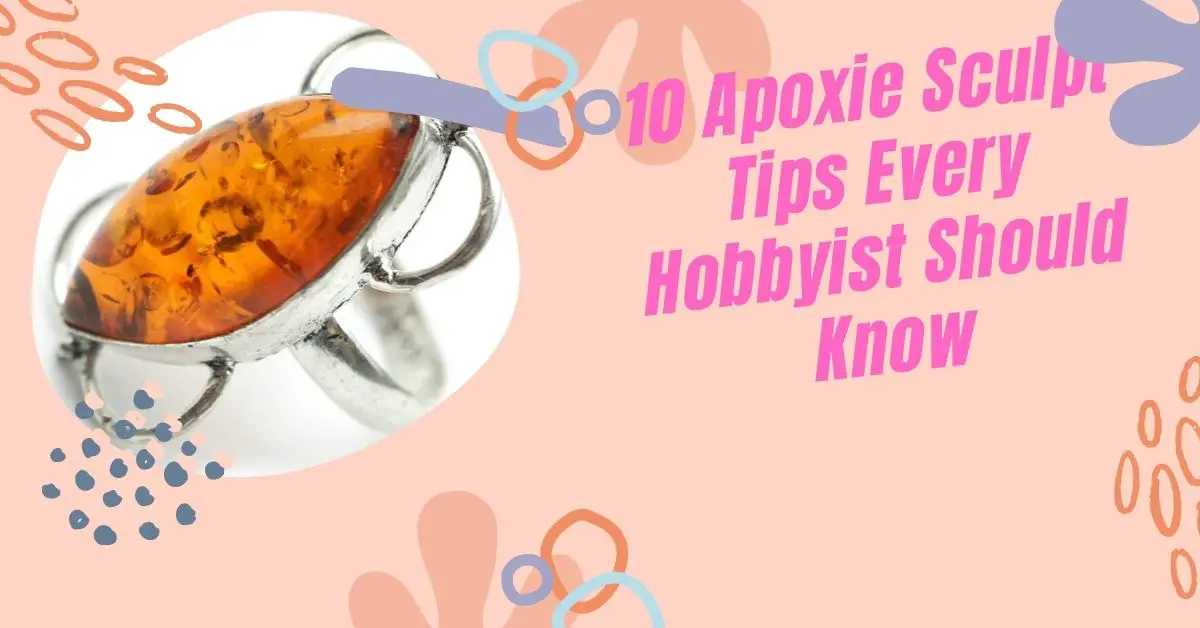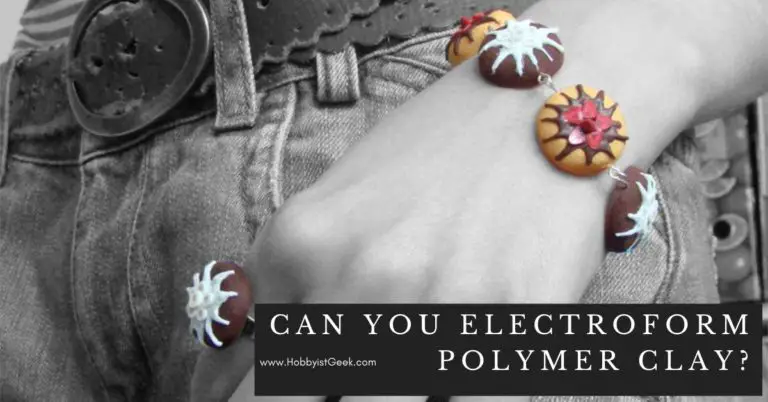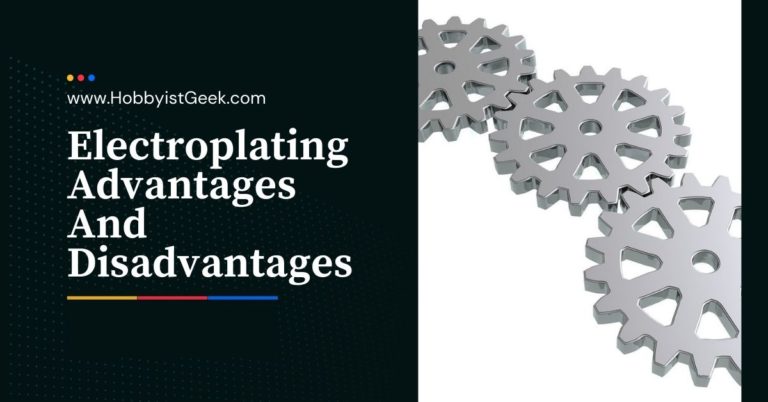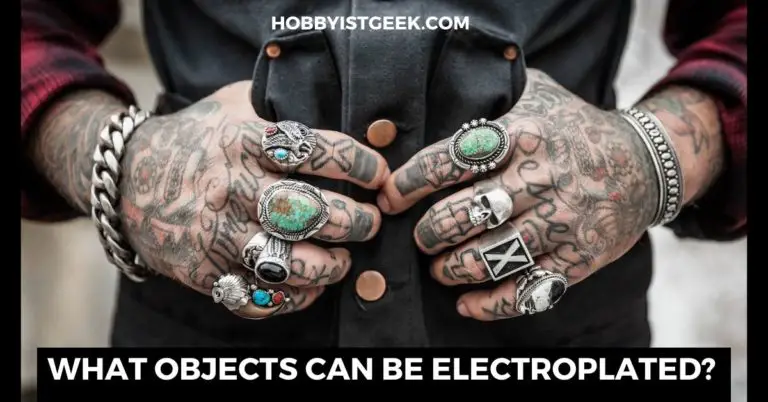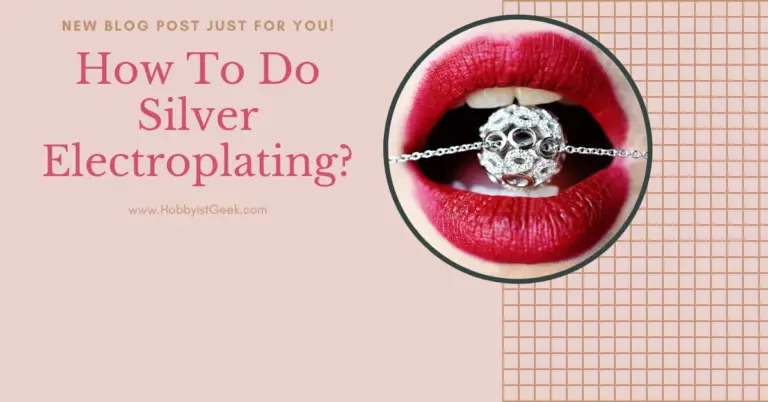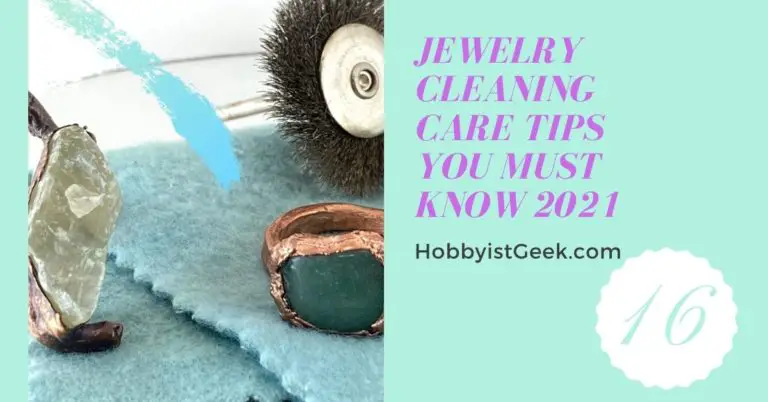10 Apoxie Sculpt Tips Every Hobbyist Should Know
We as electroforming artists are constantly looking for ways to extend our artistic freedom, and to find new ways of creating pieces for us to electroform.
One of those relatively unknown, yet very powerful, ways is a substance called Apoxie Sculpt, but what is Apoxie Sculpt? And how can we use it for electroforming?
The answer to the question 10 Apoxie Sculpt Tips Every Hobbyist Should Know
What is Apoxie Sculpt? Apoxie Sculpt is a crossover between clay and epoxy, it offers the mouldability of clay paired with the strength and adhesion of epoxy! It’s perfect for sculpting and it doesn’t require baking as it hardens by itself.
All these features make it perfect to create a base for our electroforming project, anything is possible!
In this article, we’re going to cover 10 tips on using Apoxie Sculpt to help new hobbyists out. Without further ado, let’s jump right into the action!
What Is Apoxie Sculpt?
We’ve already briefly covered this topic in the introduction, but we have to elaborate on it a little more.
Apoxie Sculpt essentially is the best of both worlds between regular clay and epoxy resin, both of which can be used to create electroforming bases.
As we’ve mentioned before, Apoxie Sculpt offers the mouldability of regular clay and the adhesion and strength of epoxy!
These properties make it perfect for us to use as a base for our electroforming projects, as we can leave our imagination run free.
Anything we imagine can be made like a breeze using Apoxie Sculpt! Since it doesn’t require baking, only drying, it’s an easy and relatively fast method of creating our piece!
What Is Apoxie Sculpt Made Of?
Now that we know what Apoxie Sculpt is, and how it can be used to help us in the electroforming process, it’s time to take a look where this mysterious substance gets it tremendously useful properties from. In other words, what is Apoxie Sculpt made of?
Unsurprisingly, these properties come from clay and epoxy themselves, as Apoxie Sculpt really is nothing more than a mixture of the two.
Polymer Clay is made of a plastic known as PVC whilst epoxy resin consists of a mixture of different chemical compounds. Apoxie Sculpt is not toxic, but using gloves is recommended as there’s little research done on skin contact with Apoxie Sculpt, better be safe than sorry!
What Is Apoxie Sculpt Cure Time?
As we’ve mentioned before, Apoxie Sculpt doesn’t require a baking process like regular polymer clay does, instead it gets it drying properties from the epoxy components, meaning it cures over time.
This raises the question, how long does Apoxie Sculpt take to cure?
Apoxie Sculpt has a so-called working time, meaning the time it’s functional and mouldable, of around 2 to 3 hours after opening.
It takes around 24 hours to fully cure to its final form, but this obviously varies depending on the size and thickness of your model.
What Apoxie Sculpt Tools Do You Need?
As with every new material you work with, we’ll need to figure out which tools are right for the job. In the case of Apoxie Sculpt we’re looking at a clay like substance, so we’ll be needing similar tools as when we’re working with regular Polymer Clay.
Useful tools are small spatulas, and small metal picks and a knife. If you look on Amazon, you can easily find clay toolsets for a great price.
You can work with Apoxie Sculpt without using any tools, but tools are recommended for the fine details and therefore the best results!

What Is An Apoxie Sculpt Kit?
Apoxie Sculpt can be used in many different colours, but the material doesn’t come with this color, it needs to be mixed!
This is where so-called Apoxie Sculpt color kits come in! Using these kits, you can mix to create any color you’d like!
These kits are sold in three categories, being Earth, Neutral, and Primary colors.
They can be bought on Amazon for great prices, and the mixing process is rather simple.
This allows us to mix and match any color we’d like, for us electroforming artists this doesn’t hold as much value as we’ll be covering it anyway, but you might be able to create some interesting results with it!
Here is an example of How To Copper Electroform A Crystal Ring at Home.
How Strong Is Apoxie Sculpt?
In order to use our Apoxie Sculpt models as a base for our electroforming projects, it needs to be pretty strong to withstand the abuse that the electroforming process will put it through, but is it strong enough to use in electroforming?
This is where the strong properties of Epoxy Resin come up, because Apoxie Sculpt is a mixture between polymer clay and epoxy it inherits its properties from these two substances.
Luckily for us, the strength property of Apoxie Sculpt comes from the epoxy part, famous for its incredible strength, and perfect to use in electroforming!
How To Make Apoxie Sculpt Dry Faster?
One of the downsides of working with Apoxie Sculpt is the relatively long curing time of 24 hours.
During this time, we can’t work on our electroforming project, and this really is one of the only, if not the only, limiting factor to Apoxie Sculpt, but is there a way to work around this issue? How do we make Apoxie Sculpt dry faster?
Apoxie Sculpt’s curing process takes place because of a chemical reaction, and as you’ll have learned back in high school, chemical reactions can be sped up by increasing the temperature!
Therefore the curing process can be sped up significantly by placing your model in a hot room, perhaps even putting it in the oven for a few minutes, this can make a difference of hours in the total curing time, allowing us to get right back to doing what we love most, electroforming!
Exploring Aves Apoxie Sculpt
How Long Does Apoxie Sculpt Last?
When working with substances like Apoxie Sculpt it’s always difficult to judge how much you’ll need beforehand, wouldn’t it be great if we could just buy a bunch and then store it?
That sounds great, but in order to do that we need to know how long our Apoxie Sculpt will be usable!
Apoxie Sculpt has a regular shelf life of two to three years, that in itself is a lot, but this can be increased all the way up to 5 years by storing it in the fridge!
As soon as you open the packaging the working period of 2-3 hours commences but sealing the packaging and placing it in the refrigerator will allow you to use it for years to come!
How Do You Soften Apoxie Sculpt?
Since we’re going to be modelling our Apoxie Sculpt as if it were regular Polymer Clay, achieving a desirable texture is essential to achieve the results we’re looking for.
In most cases this will require us to soften the Apoxie Sculpt to make it easier to work with, but how do we do this?
Apoxie Sculpt can be softened by adding a little bit of water to it, it’s recommended to heat the substance up a little bit before applying the water, as this will improve the mixing, but be very careful to not fully cure the Apoxie Sculpt when you’re heating it!
Mix the water and the Apoxie Sculpt, and it should now be softer, and easier to work with!
How Do You Color Apoxie Sculpt?
To unleash true artistic freedom, and to experiment with some mazing color combinations, we’ll need to know how to color our Apoxie Sculpt.
We’ve already briefly touched on this point when we were discussing the many color kits available for Apoxie Sculpt, but how do we use these kits to color our material?
It’s really as simple as mixing the materials found in the color kit with our existing Apoxie Sculpt!
Mix the two at a 1:1 ratio and be sure to properly mix the two to achieve bright and vibrant colors.
If you want to, you could even experiment by mixing the colors in the color kit to achieve interesting results!

Final Thoughts For 10 Apoxie Sculpt Tips Every Hobbyist Should Know
All in all, Apoxie Sculpt is an incredibly powerful substance to use in our electroforming projects, it offers the best of both worlds between clay and epoxy, and therefore allows for endless possibilities!
Add the large variety of coloring options on top of that and you’re looking at a truly unmatched substance to create our electroforming base pieces!
Electroforming: The Ultimate Guide Check It Out!
For more Information about the different clay options Can You Electroform Polymer Clay?
Thank you for reading and good luck discovering the wonderful substance of Apoxie Sculpt!
I hope I answered all your questions about the 10 Apoxie Sculpt Tips Every Hobbyist Should Know.
Sources In MLA Format:
“Apoxie Sculpt – Aves: Maker of Fine Clays and Maches, Apoxie Sculpt, Epoxy Putty and More.” Aves, avesstudio.com/shop/apoxie-sculpt/#:~:text=Apoxie%C2%AE%20Sculpt%20combines%20the,is%20easy%20to%20mix%20%26%20use.&text=Great%20for%20sculpting%2C%20embellishing%2C%20bonding,a%20variety%20of%20finishing%20options.
“Apoxie Sculpt Color Kits – Aves: Maker of Fine Clays and Maches, Apoxie Sculpt, Epoxy Putty and More.” Aves, avesstudio.com/shop/apoxie-sculpt-color-kit-sampler/.
“Epoxies in Building and Construction.” Building With Chemistry, 13 Jan. 2021, www.buildingwithchemistry.org/building-future/materials-science/epoxies/#:~:text=Epoxies%20are%20thermoset%20plastics%20made,resistance%20and%20other%20specialized%20properties.
“FAQ – Aves: Maker of Fine Clays and Maches, Apoxie Sculpt, Epoxy Putty and More.” Aves, avesstudio.com/pages/faq/#:~:text=Apoxie%C2%AE%20Sculpt%2C%20Super%20White,freezer%20for%20extended%20shelve%20life.
FormX. “Aves Apoxie Sculpt.” FormX Webshop, www.formx.eu/modeling/epoxy-clays/aves-apoxie-sculpt/index.php#:~:text=Apoxie%C2%AE%20Sculpt%20is%20now,cure%20time%20is%2024%20hours.
“Stainless Steel Tools – Aves: Maker of Fine Clays and Maches, Apoxie Sculpt, Epoxy Putty and More.” Aves, avesstudio.com/shop/stainless-steel-tools/.
“Thread: How to Harden Epoxy Clay in 5 Minutes.” CoolMiniOrNot Forums RSS, www.coolminiornot.com/forums/showthread.php?66367.
“What Is Epoxy Clay?” Elven Elysium Polymer Clay Tutorials and Glowing Jewelry, www.elvenelysium.com/blog/what-is-epoxy-clay.
- Evil Eye Hand: Unveiling the Mystical Origins and Meanings - February 2, 2024
- Amegreen Amethyst Meaning: Discover the Hidden Magic! - February 2, 2024
- Is The Evil Eye Bad?: A Deep Dive into Evil Eye Taboos - February 2, 2024

